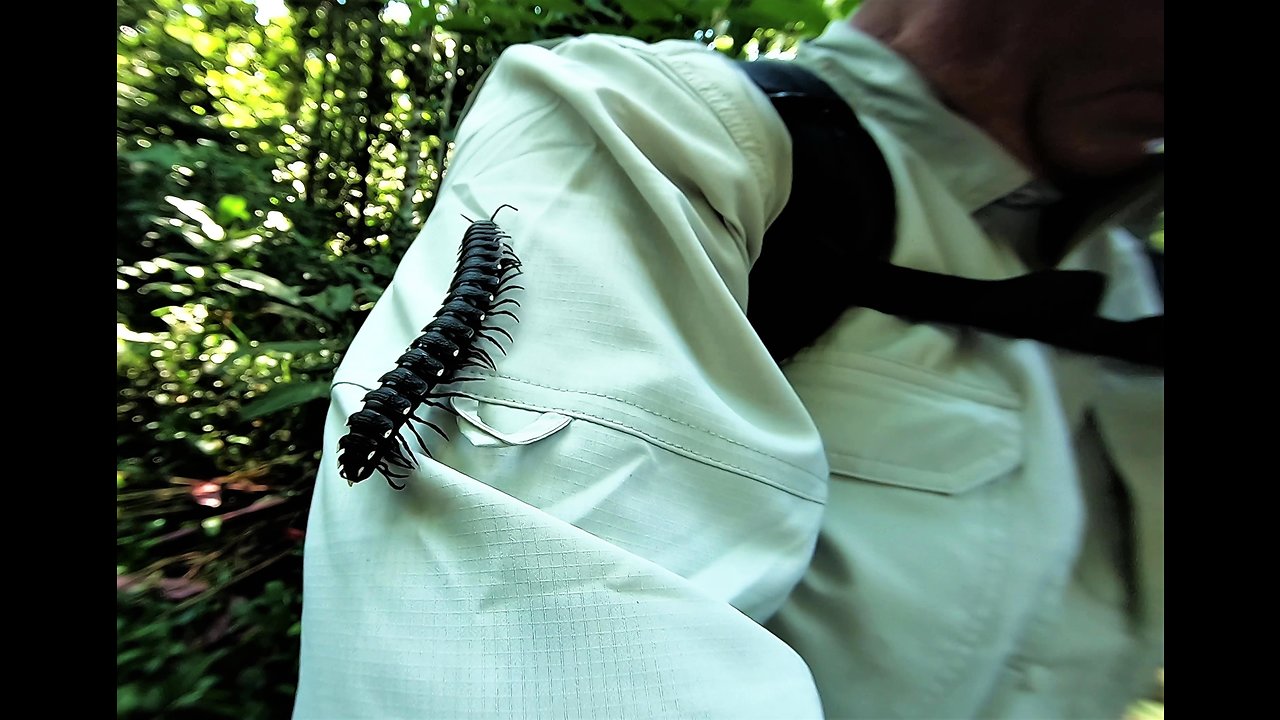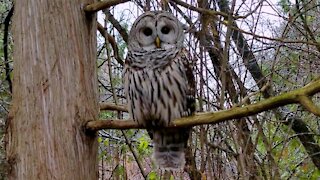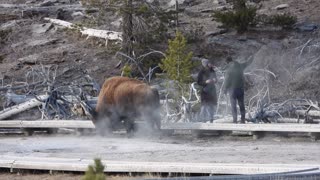Premium Only Content

Tourists have close encounter with giant millipede in the Amazon
Millipedes are fearsome looking creatures that live in many countries around the world. They can be found in Europe, North America, South America, Africa, and even the U.K. But the millipedes in the Amazon, such as this Giant Flat Backed Millipede from Ecuador are particularly large, commonly reaching a length of over one foot. They have approximately 40 pairs of legs on their segmented bodies, having two pairs on each segment. This is one of the things that distinguishes them easily from centipedes, which have one pair of legs per segment. This is an important distinction because the centipede is venomous while the millipede is not. They do produce a noxious chemical though that is foul smelling and can be a strong irritant. If the millipede is threatened, it emits a compound that contains cyanide, which will often deter any animal that tries to eat it.
This millipede was spotted on a hike by a guide leading Canadian tourists through the rain forest in Ecuador. Delighted to see such an unusual creature, they allowed it to crawl on their arms for photographs and videos. Reassured by their knowledgeable guide that the beast was harmless, they carefully handled it and then returned it to its place on the forest floor.
Although the millipede is a scary looking creature, it poses no threat to humans and will not bite people. They feed on decaying plant matter such as damp and rotting wood and leaves. If decaying plants are not readily available, they will feed on living plants. The similar appearing centipede is actually carnivorous and feeds primarily on insects. The millipede has no bones, and it relies on its armor plated exoskeleton, made up of keratin, for protection and its structure. They are slow moving creatures that crawl along the forest floor where most rotting vegetation lies. They can also be found in trees and clumps of plants higher in the forest canopy. This is one of the few arthropods that live so long, often reaching an age of up to seven years. They are extremely important for the health of any forest due their large numbers and important contribution to the process of breaking down and recycling plant material.
-
 0:59
0:59
WildCreatures
1 month ago $1.84 earnedScuba diver has close call with whale shark cruising right at him
3.59K8 -
 1:28
1:28
WildCreatures
4 years ago $1.63 earnedBeautiful giant hornbill plays happily with a new toy
7.26K13 -
 0:46
0:46
rumblestaff
4 years agoUp-close encounter with Killer Whales caught on camera
11.1K6 -
 0:15
0:15
rumblestaff
4 years agoLocal dolphin becomes famous for swimming with tourists
2.28K2 -
 0:26
0:26
Icepacktogo
4 years agoGuy has hilarious encounter with wild moose on the road
17.9K12 -
 2:12
2:12
WildCreatures
4 years ago $15.55 earnedMan has incredible close connection with wild owl in the forest
116K53 -
 0:54
0:54
ViralHog
4 years ago $0.29 earnedCouple Get Dangerously Close to Wild Buffalo
27.5K5 -
 1:12
1:12
Tnewton
4 years agoClose Encounter with a Fox
1.17K -
 LIVE
LIVE
GamersErr0r
4 hours ago $0.67 earnedMarvel Rivals Booty Bandit | Ft. SnoopLion
268 watching -
 56:47
56:47
Man in America
12 hours agoMEP Christine Anderson EXPOSES the SINISTER Plan for Global Slavery—and How We FIGHT BACK
66.3K20